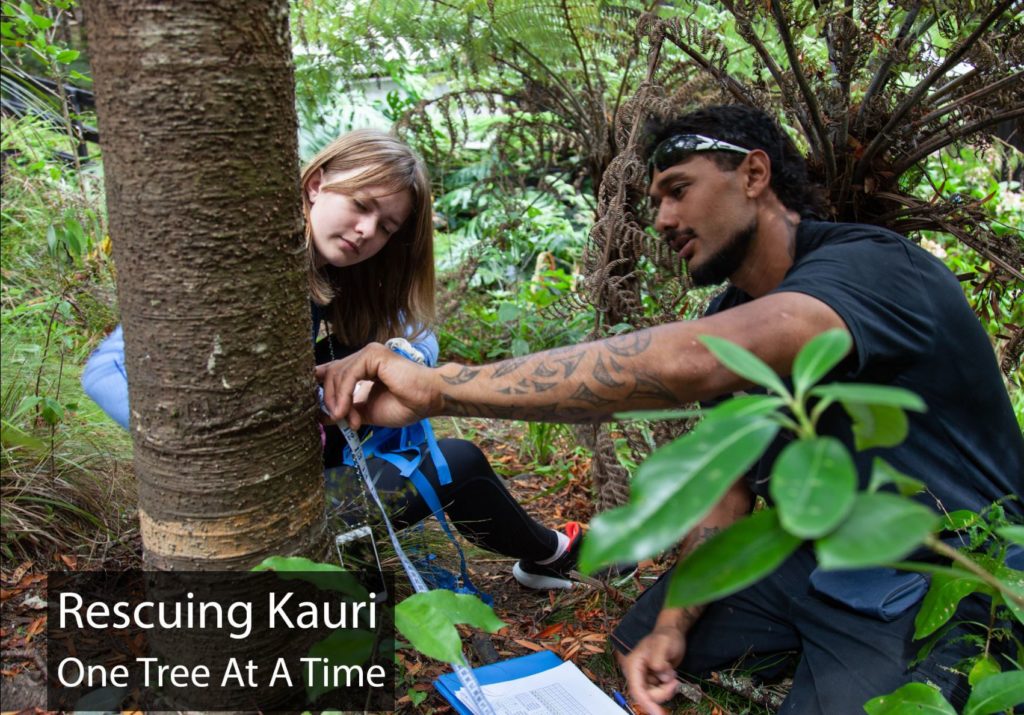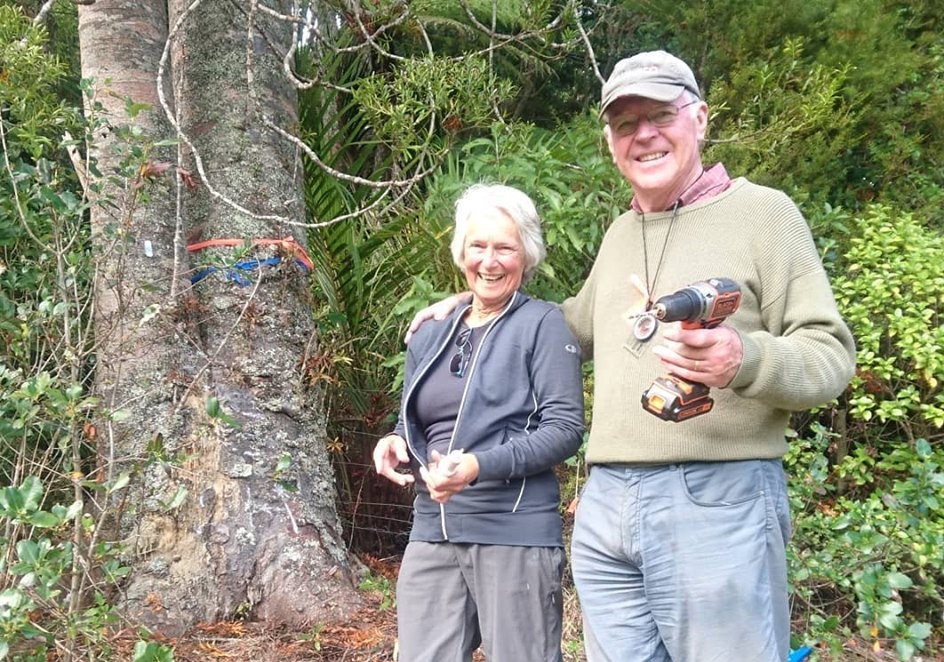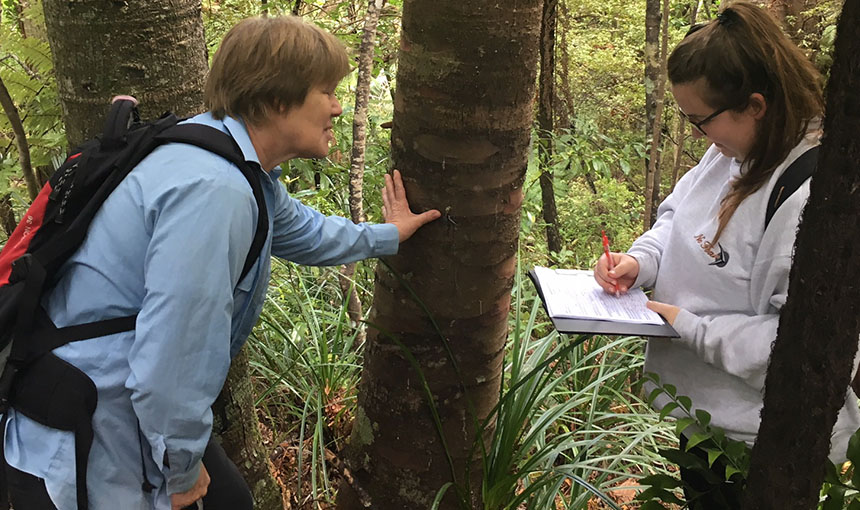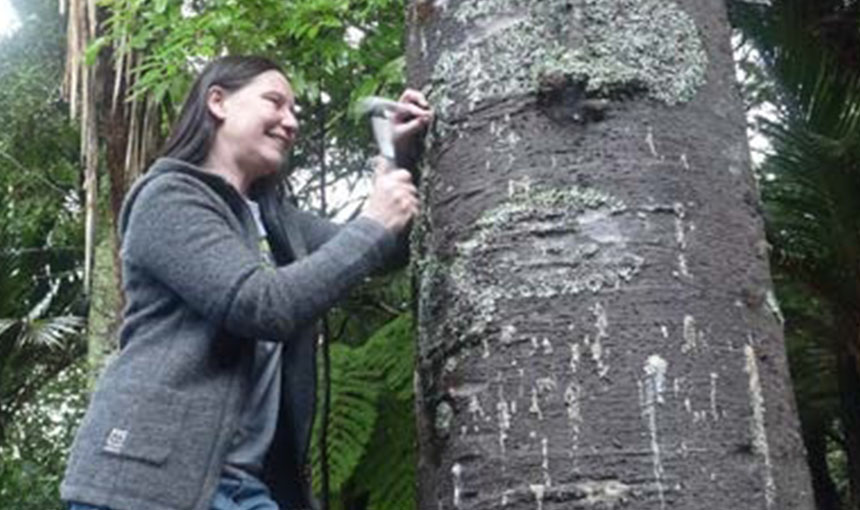A new way to tell science stories
Mobilising for Action co-lead Dr Marie McEntee has joined with colleagues from the University of Auckland and with Kauri Rescue to tell the story of this citizen science project in a new, interactive and immersive way.

They have created a ‘story map’ which allows the viewer to navigate through the story of Kauri Rescue – seeing kauri forests for themselves, hearing experts explain kauri dieback and feeling the love those in ‘kauri land’ have for their ngahere.
Marie says it’s really a story of hope.
“While science works hard to find a permanent solution to kauri dieback, scientists, mana whenua and community are working with the use of phosphite and other treatment tools to buy some time – while we wait for a permanent solution, if that is possible – that is the hope.
“There are so many things we learnt with Kauri Rescue about building a project community that can inform future citizen science work. If all we did was publish a paper in a science journal, there would be so many audiences that would miss out on hearing the story: the public; schools and universities studying kauri dieback; scientists wanting to learn about how to collaborate; the science community interested in citizen science.”
Marie says the hardest part of creating the story map was figuring out what to include from the two years of Kauri Rescue mahi (work). With lots of different audiences and levels to the story, the team knew they had to use a multi-media approach.
The end result reflects an incredible breadth of participants in the project.
“The citizen scientists, the ambassadors, the Kauri Rescue team, and the BioHeritage team who embraced this project. Kauri Rescue was a high energy project and it worked because it was collaborative. It is the community that held this project together – their energy,” Marie says.
What next?
Kauri Rescue is in the midst of establishing themselves as a Community Trust – a status that would provide longevity and security to the project.
The story map can be continually updated to reflect Kauri Rescue’s journey and Marie hopes it will act as a living record.
“As the work is tracked over the next 5 years (to see the effect of the treatments done so far) there will be more data to follow,” she says.
“It is also exciting to see how Kauri Rescue develops: how it transitions from a science research project into a Community Trust that focuses on science and even social science research.
“We need to follow this transition to better understand how research projects can evolve and survive beyond their funded period.”
Posted August 2020.


